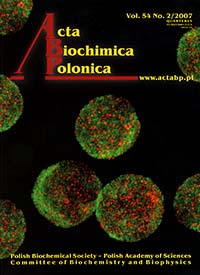Responsiveness of Lycopersicon pimpinellifolium to acute UV-C exposure: histo-cytochemistry of the injury and DNA damage.
Abstract
The in vivo and in vitro effects of UV-C (254 nm) exposure (0.039 watt . m(-2) . s for 2 h) of currant tomato (Lycopersicon pimpinellifolium), indigenous to Peru and Ecuador, were assayed. H(2)O(2) deposits, dead cells and DNA damage were localized, 12/24 h after irradiation, mainly in periveinal parenchyma of the 1st and 2nd order veins of the leaves, and before the appearance of visible symptoms, which occurred 48 h after irradiation. Cell death index was of 43.5 +/- 12% in exposed leaf tissues, 24 h after treatment. In currant tomato protoplasts, the percentage of viable cells dropped 1 h after UV-C irradiation from 97.42 +/- 2.1% to 43.38 +/- 4.2%. Afterwards, the protoplast viability progressively decreased to 40.16 +/- 7.25% at 2 h, to 38.31 +/- 6.9% at 4 h, and to 36.46 +/- 1.84% at 6 h after the exposure. The genotoxic impact of UV-C radiation on protoplasts was assessed with single cell gel electrophoresis (SCGE, or comet assay). UV-C treatment greatly enhanced DNA migration, with 75.37 +/- 3.7% of DNA in the tail versus 7.88 +/- 5.5% in the case of untreated nuclei. Oxidative stress by H(2)O(2) used as a positive control, induced a similar damage on non-irradiated protoplasts, with 71.59 +/- 5.5% of DNA in the tail, whereas oxidative stress imposed on UV-C irradiated protoplasts slightly increased the DNA damage (85.13 +/- 4.1%). According to these results, SCGE of protoplasts could be an alternative to nuclei extraction directly from leaf tissues.Acta Biochimica Polonica is an OpenAccess quarterly and publishes four issues a year. All contents are distributed under the Creative Commons Attribution-ShareAlike 4.0 International (CC BY 4.0) license. Everybody may use the content following terms: Attribution — You must give appropriate credit, provide a link to the license, and indicate if changes were made. You may do so in any reasonable manner, but not in any way that suggests the licensor endorses you or your use.
Copyright for all published papers © stays with the authors.
Copyright for the journal: © Polish Biochemical Society.


